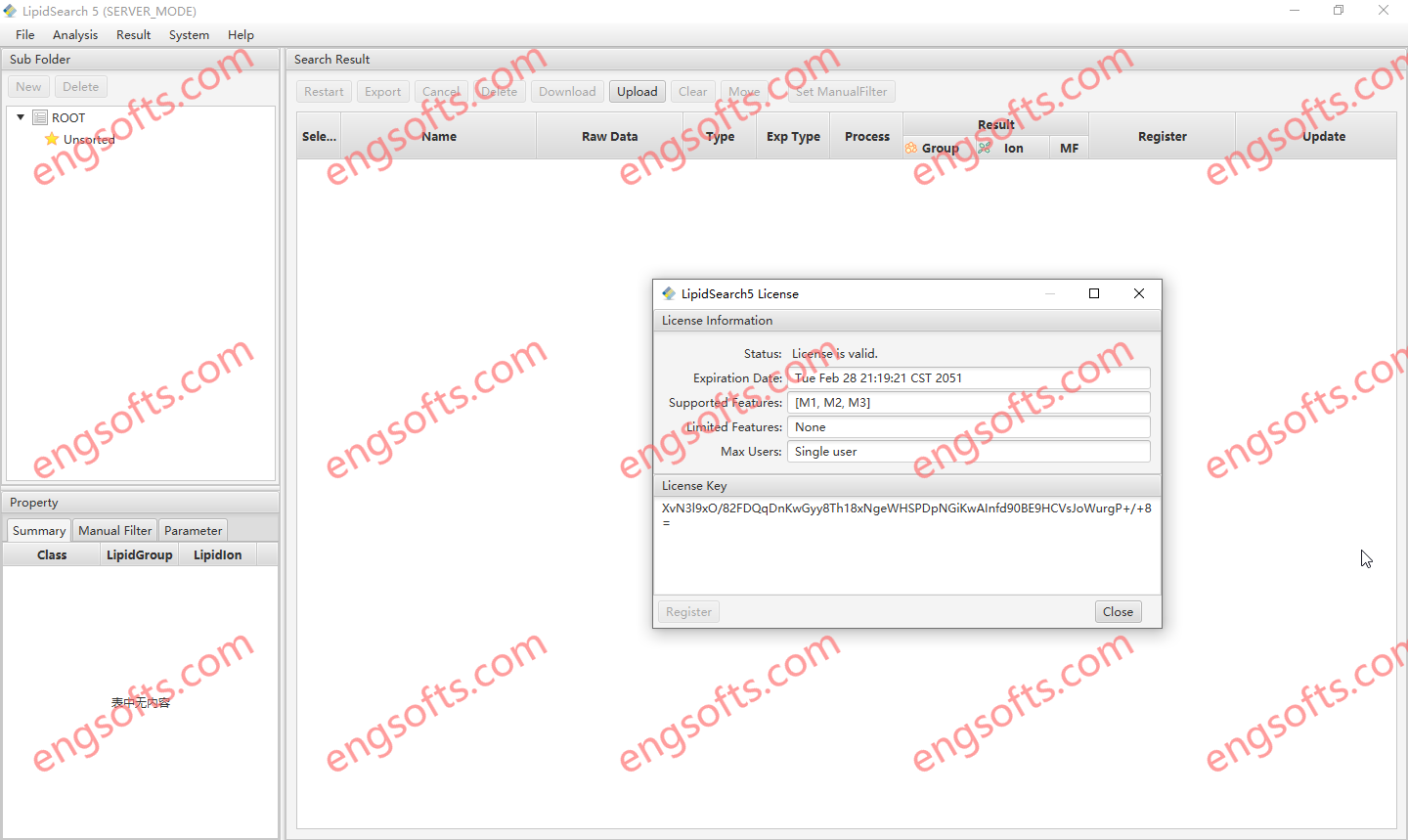Lipids are key components of living organisms and an essential contributor to cell processes. Lipidomics, the study of lipid component of a system, has recently gained an increasing importance with recent major discoveries of lipid roles in cell-signaling and vital biological processes beyond the established functions as membrane building blocks and energy storage. Lipidomics and lipid profiling, using Liquid Chromatography Mass Spectrometry (LC-MS) is a rapidly growing are in translational medical research. The Thermo Scientific™ LipidSearch™ software processes LC-MS data, including the high-resolution accurate-mass (HRAM) data generated by Thermo Scientific™ Orbitrap™ -based mass spectrometers, to provide accurate lipid identification, relative quantitation, statistical analysis and results visualization. LipidSearch mines data, even those acquired under advanced workflows such as multiple activation types and multistage fragmentation generated by Thermo Scientific™ Tribrid™ systems, to produce meaningful, actionable results.

Thermo Fisher Scientific Lipidsearch 5.1 Tested Picture
Developed jointly by Professor Ryo Taguchi and Mitsui Knowledge Industry Co. (Tokyo, Japan), Thermo Scientific™ LipidSearch™ Software is a powerful tool for automatic identification and relative quantification of lipids from LC-MS data. The LipidSearch software features:
- Lipid database containing >1.5 million lipid ions and their predicted fragment ions
- Compatibility with Thermo Scientific triple quadrupole, ion trap, hybrid and tribrid, and Orbitrap mass spectrometers
- Relative quantitation of identified lipid precursors in LC-MS and direct infusion experiments
- Alignment of lipid data obtained from multiple data files
Smart Peak Detection for More Accurate Identification and Quantification
The peak detection engine implemented in LipidSearch software can accommodate data from multiple types of mass spectrometers and multiple types of MS experiments. The combination of unique peak detection algorithms, tailored for each experiment and instrument type, and mass spectral processing functions ensures accurate peak detection for better identification and quantification.
Extensive Lipid Database for More Comprehensive Identification
The database contains defined structures and includes more than 1.5 million lipid ions and their predicted fragment ions. The database is continuously expanding to add new lipid classes and fatty acids specialized in certain sample types such as skin and plant lipids. Fragmentation patterns are calculated and improved using expert knowledge and experimental results. Lipid adduct ions and MSn fingerprints are also included. Data are stored in XML files and are easily customized.
Dual Identification Algorithms to Accommodate Different Types of Data
LipidSearch software includes a group-specific ID algorithm optimized for targeted identification and a comprehensive ID algorithm optimized for untargeted identification. The group-specific algorithm uses precursor ion scans and neutral loss scans to identify lipids based on the polar head groups or fatty acids. The comprehensive ID algorithm uses a combination of product ion scans and database matching to identify lipids. LipidSearch software also includes scoring algorithms to keep the focus on most reliable lipid identifications.
Peak Alignment for Better Quantitation
Prior to quantitation, the extracted chromatographic peaks from each sample are aligned within a retention time window, ensuring more accurate quantitation.

 ID:softmed
ID:softmed ID:956575828
ID:956575828
Must log in before commenting!
Sign Up